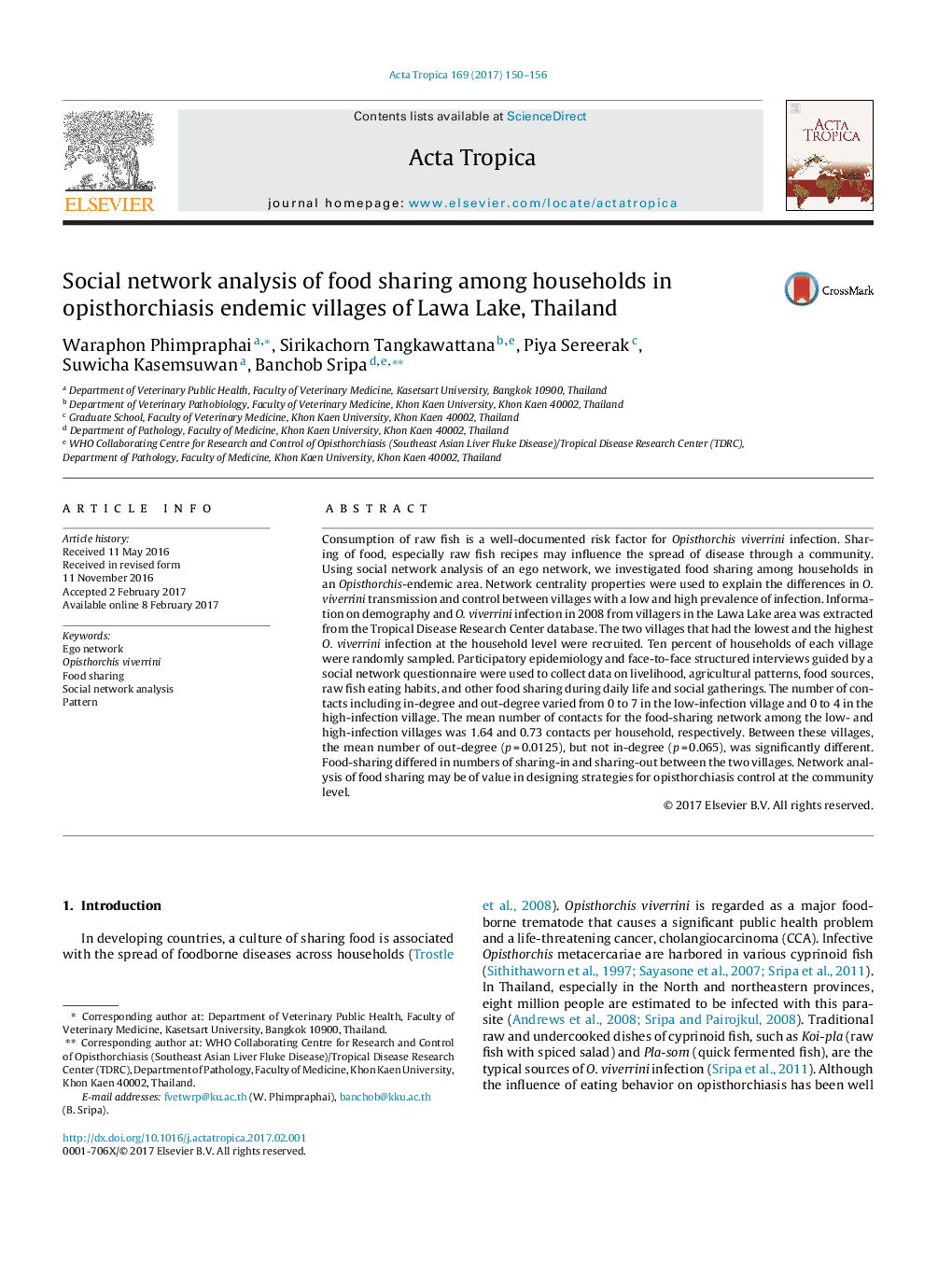| کد مقاله | کد نشریه | سال انتشار | مقاله انگلیسی | نسخه تمام متن |
|---|---|---|---|---|
| 5670866 | 1592755 | 2017 | 7 صفحه PDF | دانلود رایگان |
- Ego network analysis was applied to explain all possible links of food sharing among the households.
- Network of low O. viverrini infection village showed a large cluster of egos.
- Duration of village settlement and lifestyles can affect the social network pattern.
Consumption of raw fish is a well-documented risk factor for Opisthorchis viverrini infection. Sharing of food, especially raw fish recipes may influence the spread of disease through a community. Using social network analysis of an ego network, we investigated food sharing among households in an Opisthorchis-endemic area. Network centrality properties were used to explain the differences in O. viverrini transmission and control between villages with a low and high prevalence of infection. Information on demography and O. viverrini infection in 2008 from villagers in the Lawa Lake area was extracted from the Tropical Disease Research Center database. The two villages that had the lowest and the highest O. viverrini infection at the household level were recruited. Ten percent of households of each village were randomly sampled. Participatory epidemiology and face-to-face structured interviews guided by a social network questionnaire were used to collect data on livelihood, agricultural patterns, food sources, raw fish eating habits, and other food sharing during daily life and social gatherings. The number of contacts including in-degree and out-degree varied from 0 to 7 in the low-infection village and 0 to 4 in the high-infection village. The mean number of contacts for the food-sharing network among the low- and high-infection villages was 1.64 and 0.73 contacts per household, respectively. Between these villages, the mean number of out-degree (p = 0.0125), but not in-degree (p = 0.065), was significantly different. Food-sharing differed in numbers of sharing-in and sharing-out between the two villages. Network analysis of food sharing may be of value in designing strategies for opisthorchiasis control at the community level.
101
Journal: Acta Tropica - Volume 169, May 2017, Pages 150-156
